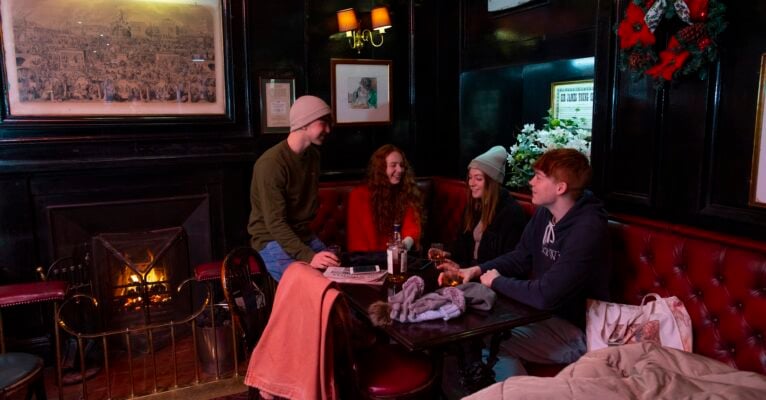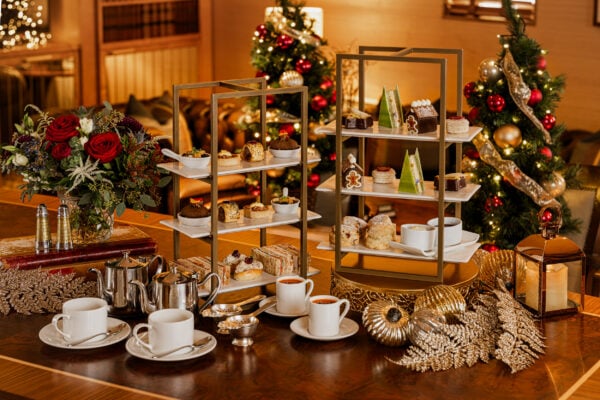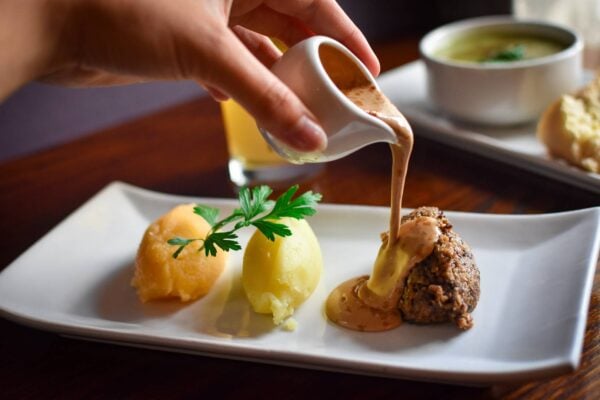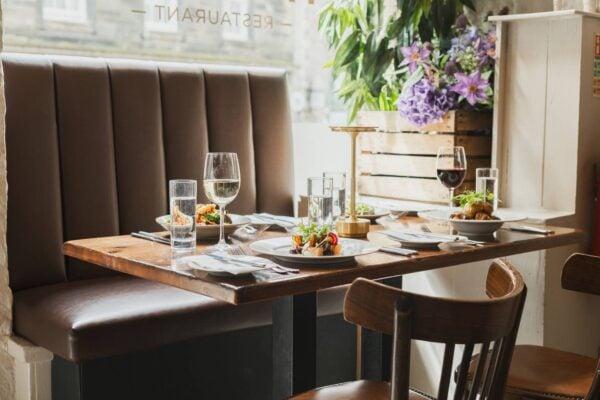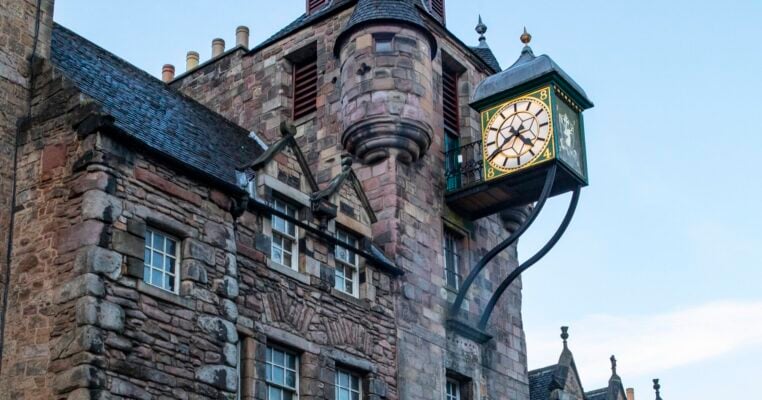Not only does Edinburgh have some of the best places to eat in the UK, it also has some of the most historic.
The wealth of historic buildings throughout the city offer so many opportunities to wine and dine in atmospheric historic surroundings.
John’s Coffee House & Tavern
Their unique history.
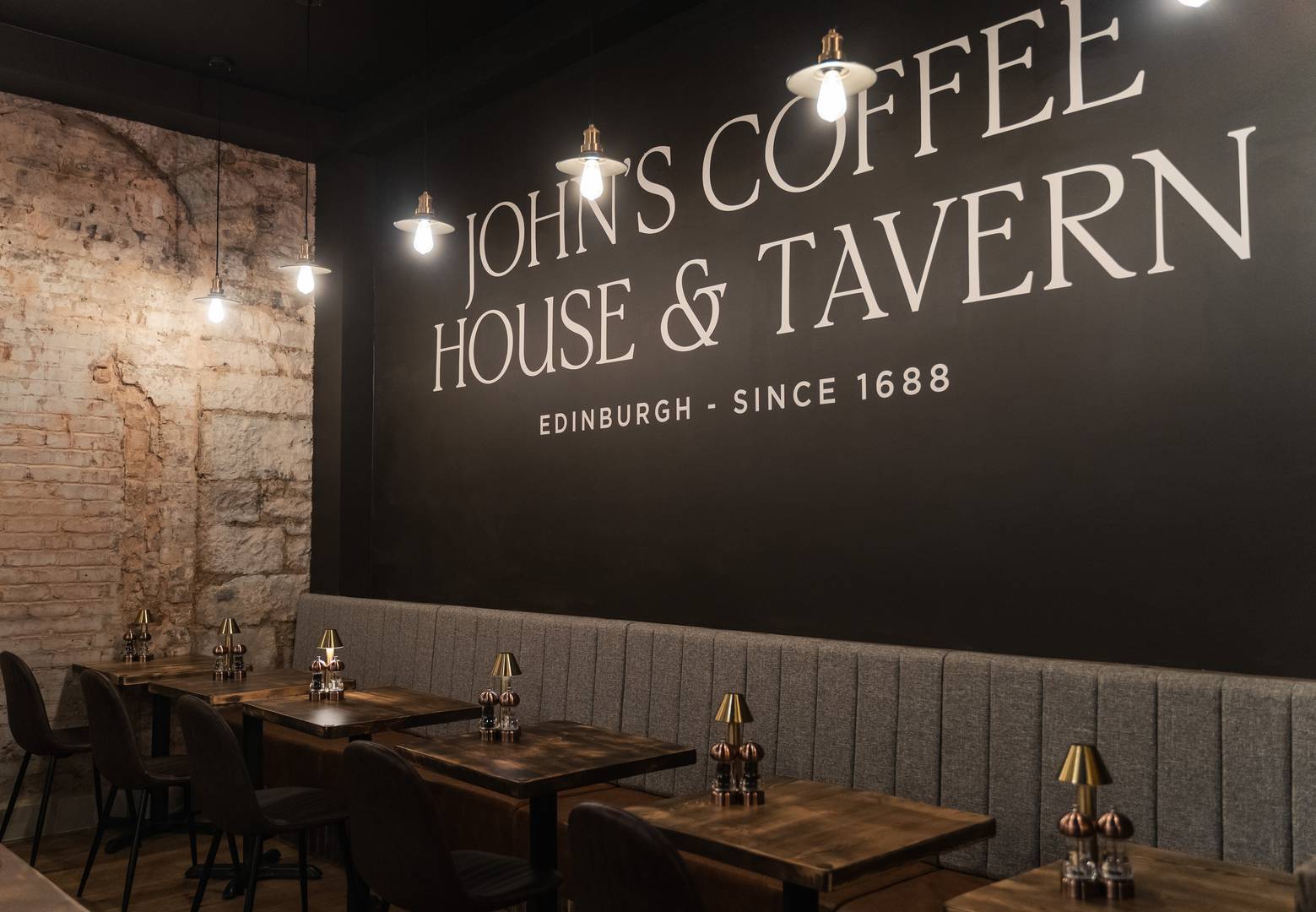
Step into history at John’s Coffee House & Tavern, one of Edinburgh’s most iconic 18th-century coffee houses. Located on Parliament Square, just off the Royal Mile, they blend rich heritage with modern hospitality, serving hot beverages, locally sourced food, fine wines, beers & ciders, and whisky.
Before the mid-19th century, Edinburgh’s Old Town was made up of cramped buildings and lively closes where community life revolved around coffee houses. John’s Coffee House was particularly famous for its welcoming atmosphere and social gatherings. After a fire in 1824 destroyed it, the site was replaced by a police station and court in 1830. While the police station’s history is interesting, the legacy of John’s Coffee House and its role in Edinburgh’s social life remains significant.
Malmaison
Their extensive drinks menu.
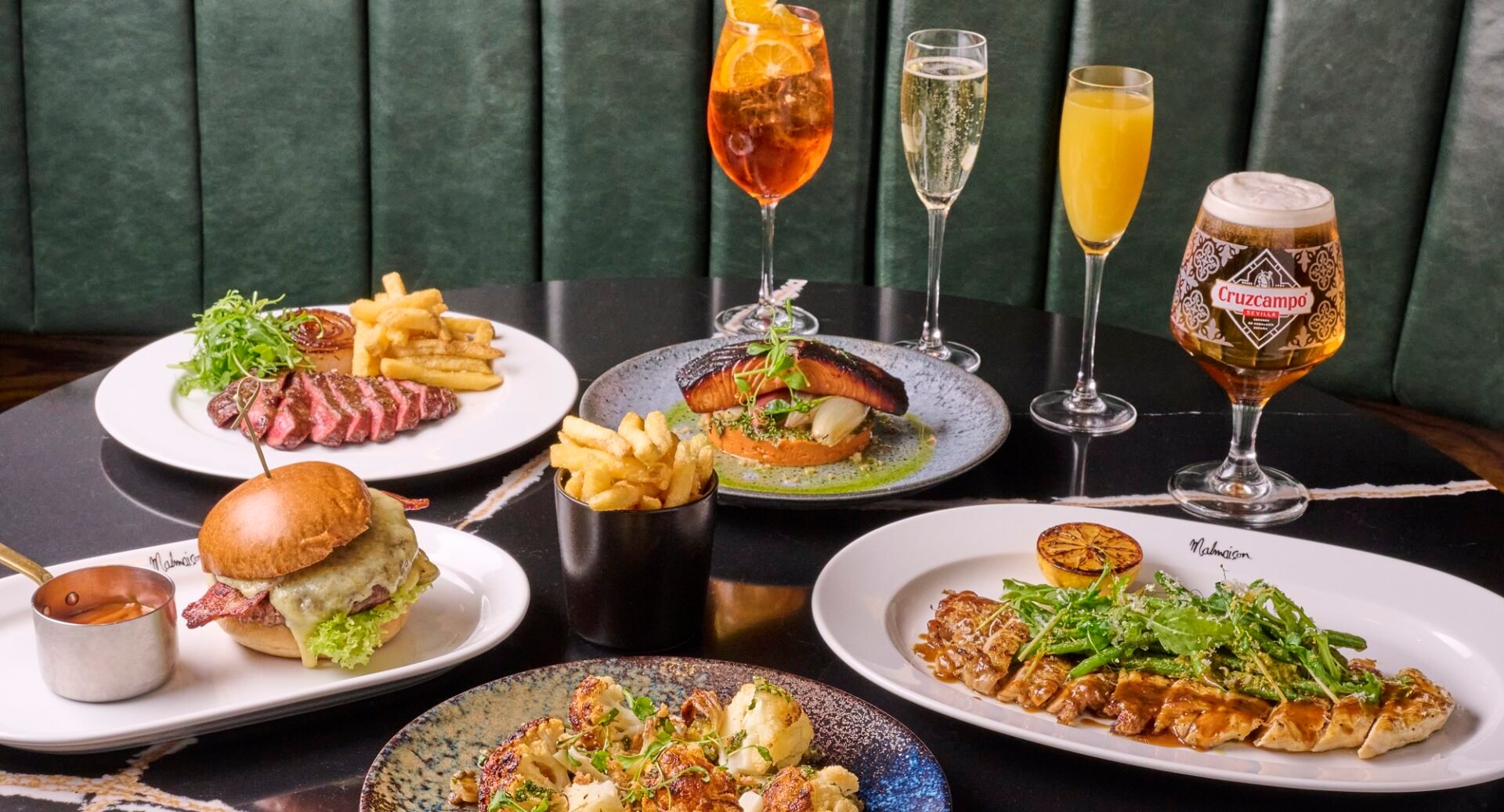
Tucked on the historic Leith waterfront on the edge of Scotland’s breathtaking capital, Malmaison Edinburgh is a perfect getaway for those eager to experience the rich offerings of this picturesque city and surrounding areas. Only 10 minutes by taxi away from the city centre, this gorgeous hotel is a stone’s throw from sought-after sights such as Edinburgh Castle, the Royal Mile, and Princes Street.
Their lively Bar & Grill is the perfect place to relax and enjoy cocktails. Continue your culinary journey with a sanctuary of modern British cuisine fused with French, American and Asian influence.
The Dome
This 19th century former bank is famed for its fabulous festive lights

Starting life in 1845 as the head office of the Commercial Bank, The Dome on George Street is now a popular bar and restaurant. Whether you’re sitting down to quintessential afternoon tea in the luxurious Georgian Tea Room, tucking into satisfying dishes such as seafood linguine or rump of Scottish lamb in the stunning Grill Room, or relaxing with a decadent cocktail in the Club Room, you can’t fail to be awed by the opulent surrounding and décor.
Famous in the city for its fabulous Christmas lights which adorn the building’s enormous classical columns, a visit here is a delight whatever the time of year.
A platform lift, suitable for manual and motorised wheelchairs as well as freestanding passengers, is located at the main entrance. Internally, a passenger lift in the main foyer provides access to all upper levels.
The Royal Yacht Britannia
Dine like royalty on Queen Elizabeth II’s former floating palace
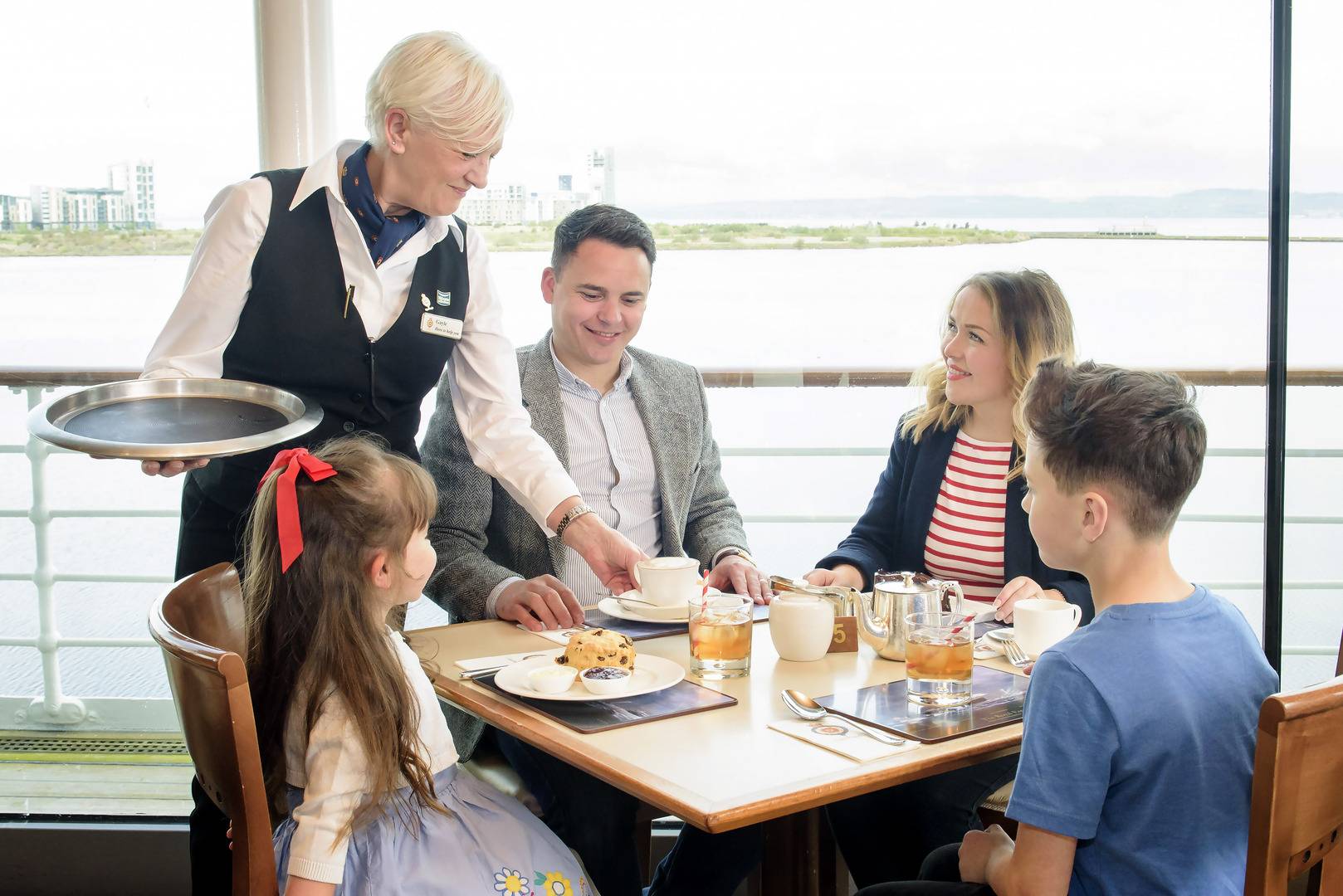
The iconic Royal Yacht Britannia, now permanently moored in Leith harbour, was Queen Elizabeth II’s former floating palace, playing host to Heads of State and dignitaries from all over the world.
Nowadays, it’s a little less formal. Why not complete you time onboard with a tasty selection of soup, sandwiches and mouth-watering cakes and scones in the Royal Deck Tea Room. Combined with waterfront views, you’ll feel like royalty.
Entry to Britannia is via Ocean Terminal Shopping Centre. Access onboard the ship’s five decks are accessible via a central lift.
Included with the entry ticket is a multi-language audio guide. A tour script available in English Braille, tablets with the tour in British and American Sign Language and printed version (in English) are also available.
Cannonball Restaurant & Bar
Look up to see the cannonball lodged into this building
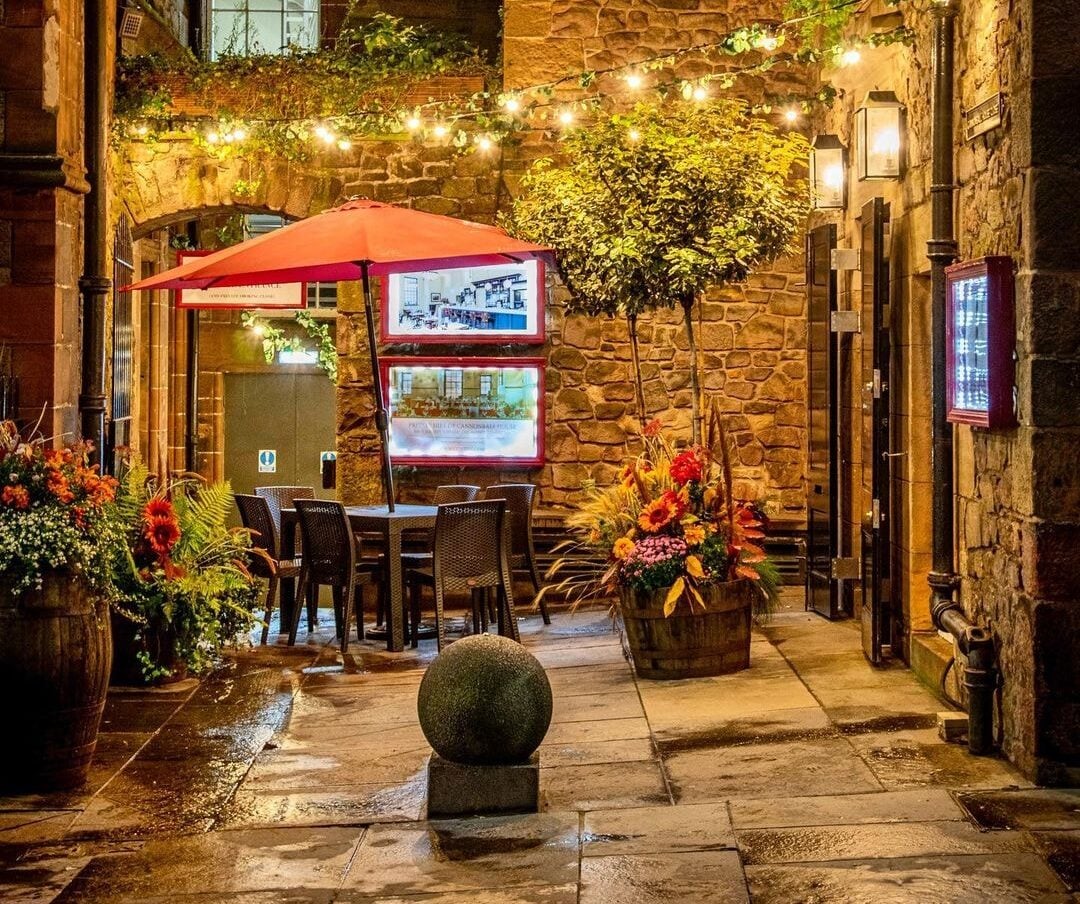
Featuring a menu which changes with the seasons, the menu at Cannonball Restaurant & Bar showcases the best of Scotland’s natural larder. The Seasonal Tasting Menu (which is also available as a vegetarian option) features six courses, with the option of paired wines.
If you glance up at the upper windows of this 17th century building, the carved initials of past owners Alexander Mure and his wife Margaret Niellems can still be seen, together with the date 1630. And as you enter, look out for the ‘tirling pin’ still fixed to the main door – old Edinburgh’s version of a door knocker.
The intriguing name, Cannonball House comes from the cannonball lodged into one side of the building. It is believed to have been fired in 1745 from Edinburgh Castle towards the Palace of Holyrood where Bonnie Prince Charlie was in residence during the Jacobite Rebellion. However, it’s more likely that it was placed there by engineers to mark the exact height above sea-level of the Comiston springs, which in the 17th century provided the city with its first piped supply of fresh water.
Spilt over three floors, the top floor offers stunning views of neighbouring Edinburgh Castle.
Cafe Royal
An elegant bar that started life as a bath and kitchen showroom
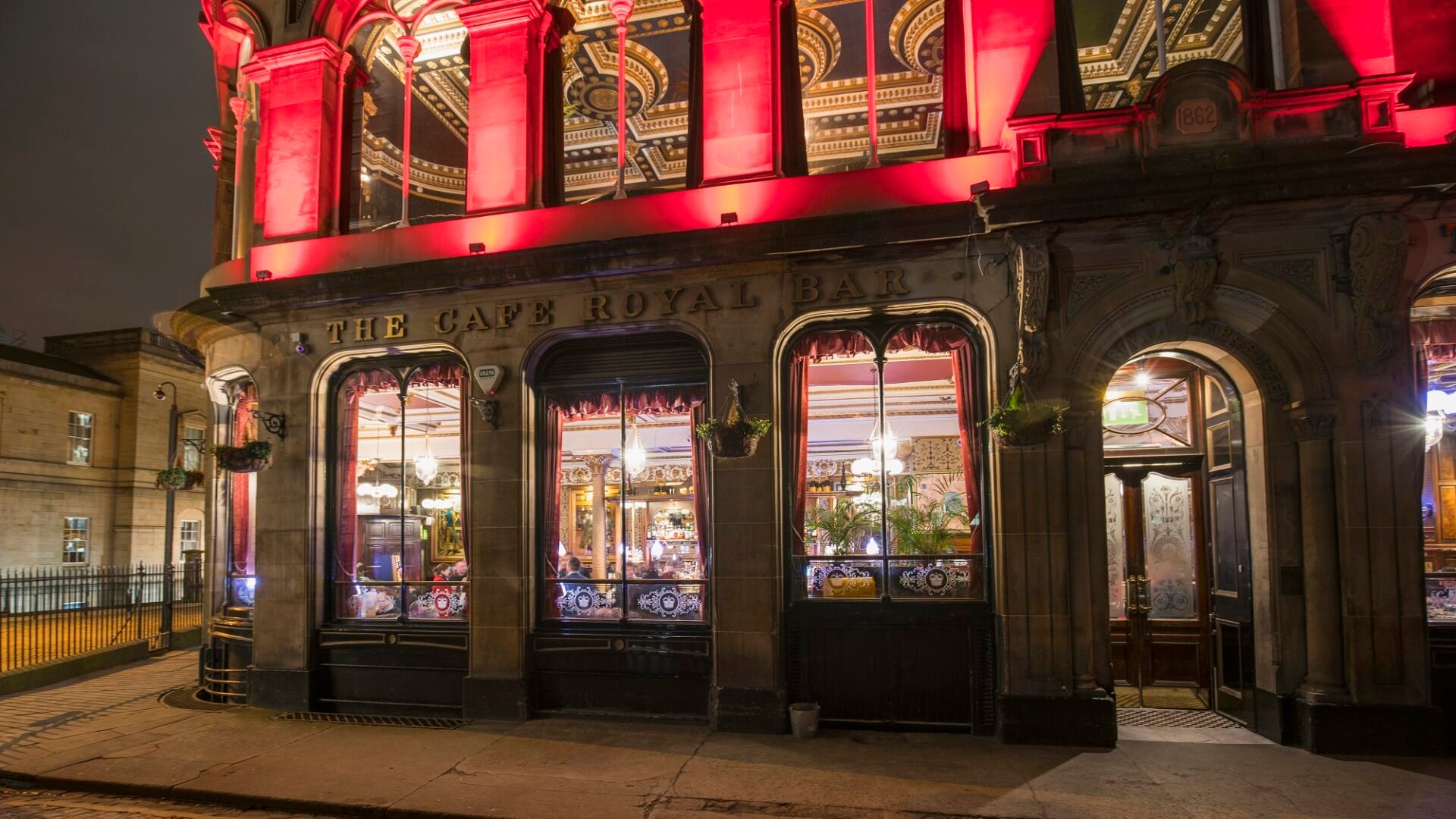
Tucked behind the bustling Princes Street, you’ll find the gem that is Cafe Royal.
Elegant stained glass and sparkling chandeliers dominate the bar area, but the crowning glory has to be the Royal Doulton ceramic tiles which grace the walls.
Using only the freshest of seasonal ingredients, expect classic dishes such as herb roast chicken, spinach, pea and barley risotto and fish pie.
This stylish building was built in 1861 and originally opened as a bath and kitchen showroom, but by 1863 had become the Café Royal.
In the late 1960s the restaurant was saved from possible redevelopment when the then-owner tried to sell to high-street retailer Woolworths. With the help of a 8,700 petition, the building was thankfully saved and listed, thus preserving it for the future.
Toilets are located downstairs, with no lift available.
The King’s Wark
Commissioned by royalty in the 15th century, now a popular bar and restaurant
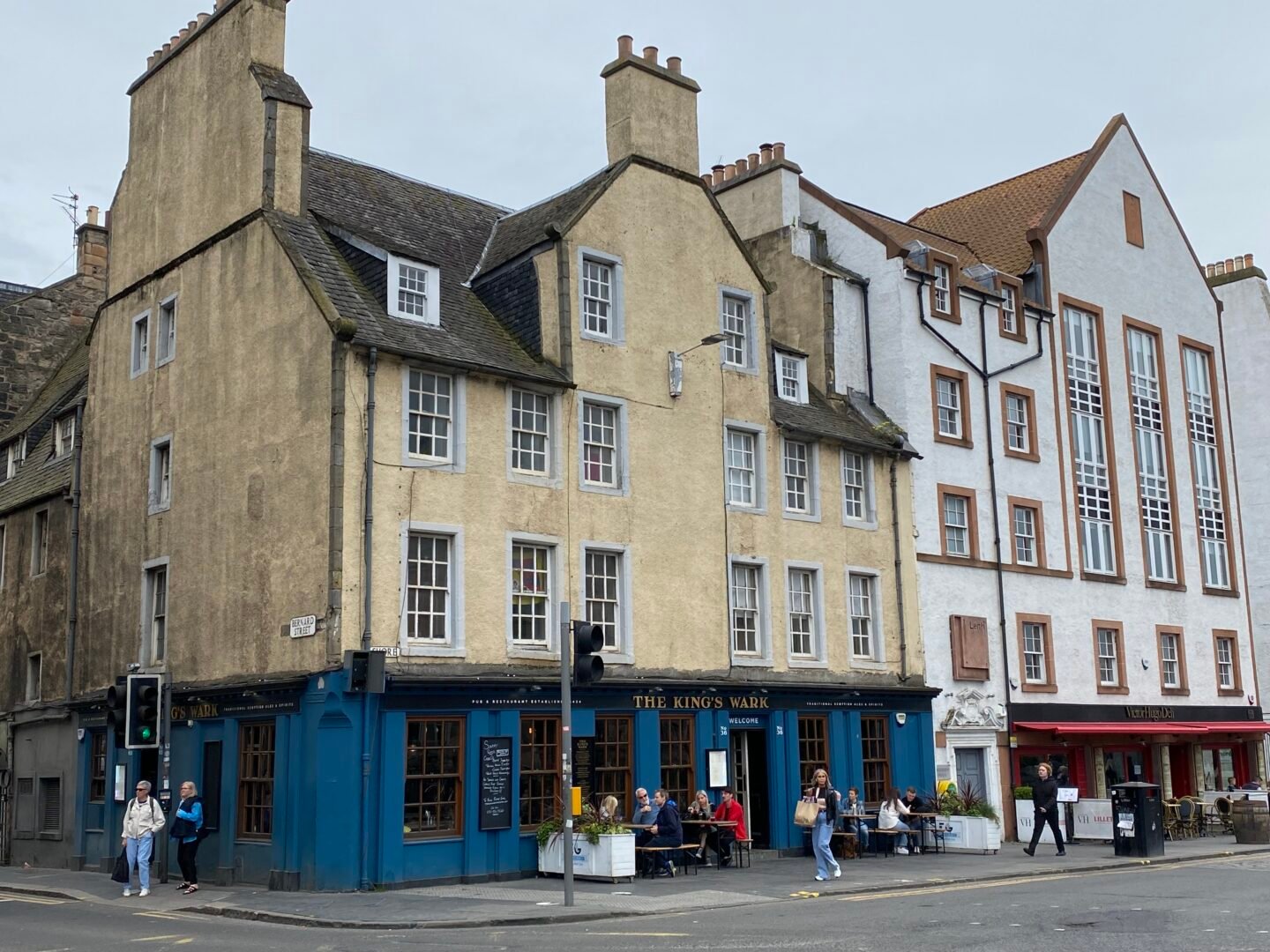
For a plate of mouth-watering sustainable Scottish seafood, shellfish or wild game be sure to pay The King’s Wark in Leith a visit. With a relaxed and cosy atmosphere, they have an extensive cask ales list, as well as a range of Scottish gins and whiskies.
This charming bar and restaurant has a history that few can rival. Designed to serve as a royal residence, a store-house and an armoury, James I began work on the building in 1434, but it was not completed until about 1500.
The building continued to have a varied past – becoming a plague hospital, a weigh-house, and at one point, incorporating a tennis court!
The Scotch Malt Whisky Society, The Vaults
The oldest building in Scotland with the same continual purpose.
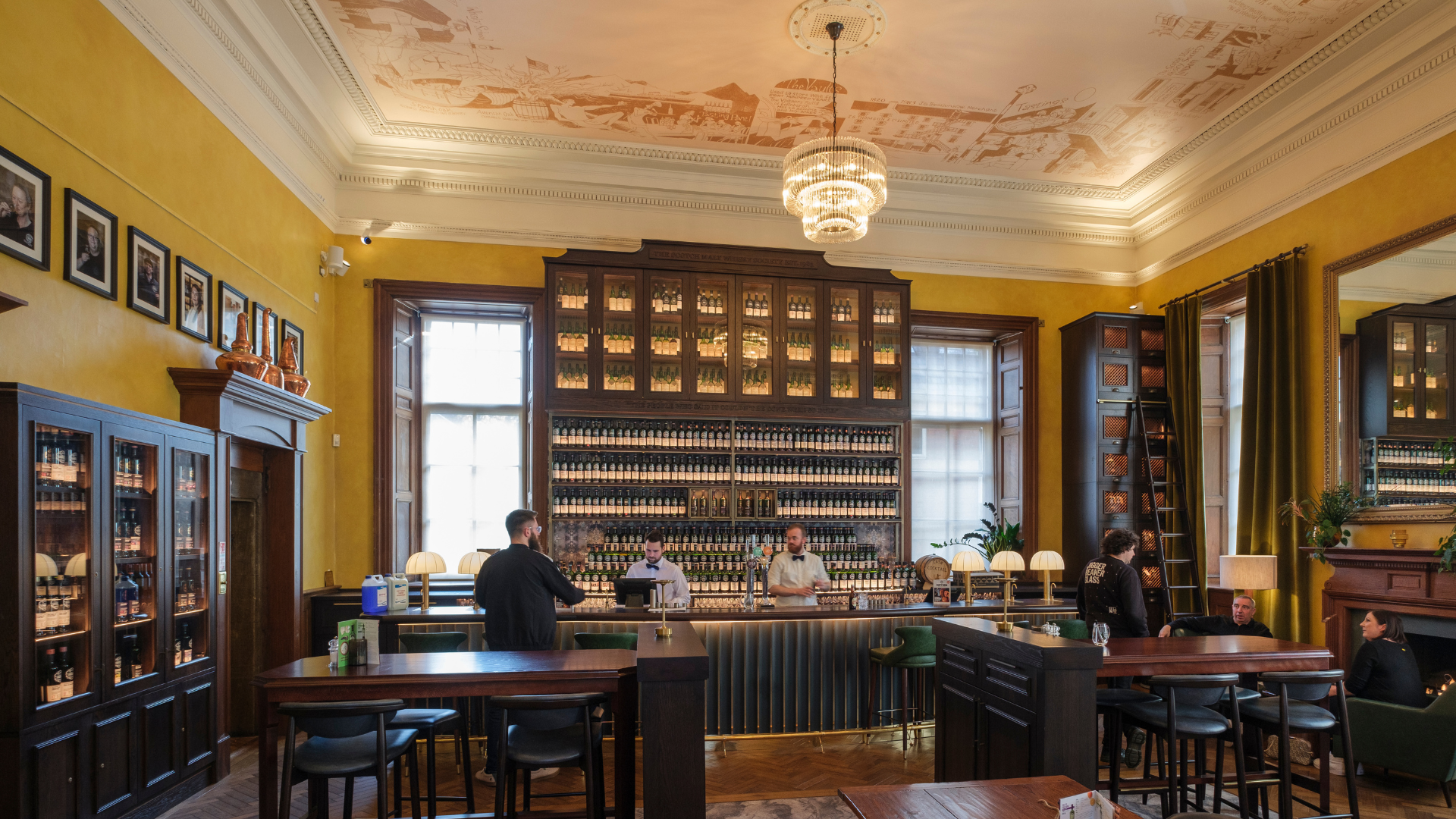
Home of The Scotch Malt Whisky Society, a member society who aim to educate and entertain about the delights of whisky, The Scotch Malt Whisky Society, The Vaults are open to members and their guests for dining and events.
As the oldest building in Scotland with the same continual purpose, the site of The Vaults has been home to fine drink, food specialists and pleasurable pursuits since the 1300s. Situated above four medieval vaults, it has housed Edinburgh’s wine and spirits merchants and ‘fleshers’ (skilled butchers), the Vintner’s Guild auction rooms as well as leisure rooms, including a 16th century ‘caich pule’ for ‘a game of chases’ (indoor tennis).
Today, tradition continues, as the underground vaults still store fine wines and, with a nod to the wine and spirits industry, it has been home to The Scotch Malt Whisky Society since 1983.
Timberyard
Once the home of theatrical props, now a cosy eatery on the Michelin Guide
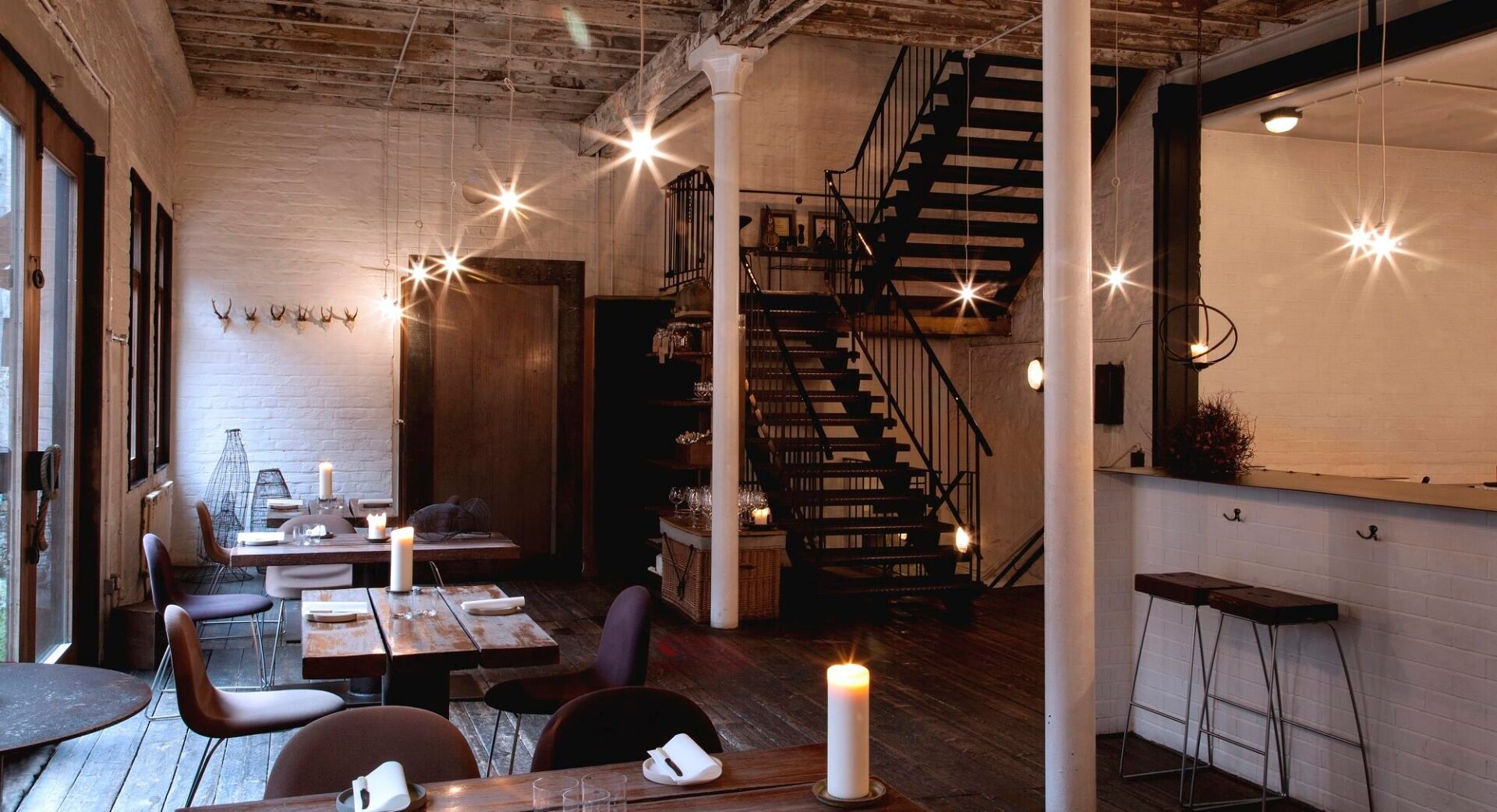
Slouchy seats, a woodburning stove and chunky wooden tables all add to the warm and welcoming atmosphere of Timberyard, a family-run restaurant housed in a converted warehouse.
The building itself dates back to the 19th century, when it was built as a props and costume store.
The current name alludes to the restaurant most recent past life though – Lawson’s Timber was set up in 1952, the first DIY store to open in Edinburgh. The store moved to Lady Lawson Street in the early 1960s before eventually closing its doors in 2004.
Colonnades at the Signet Library
King George IV declaring it ‘The finest drawing room in Europe’
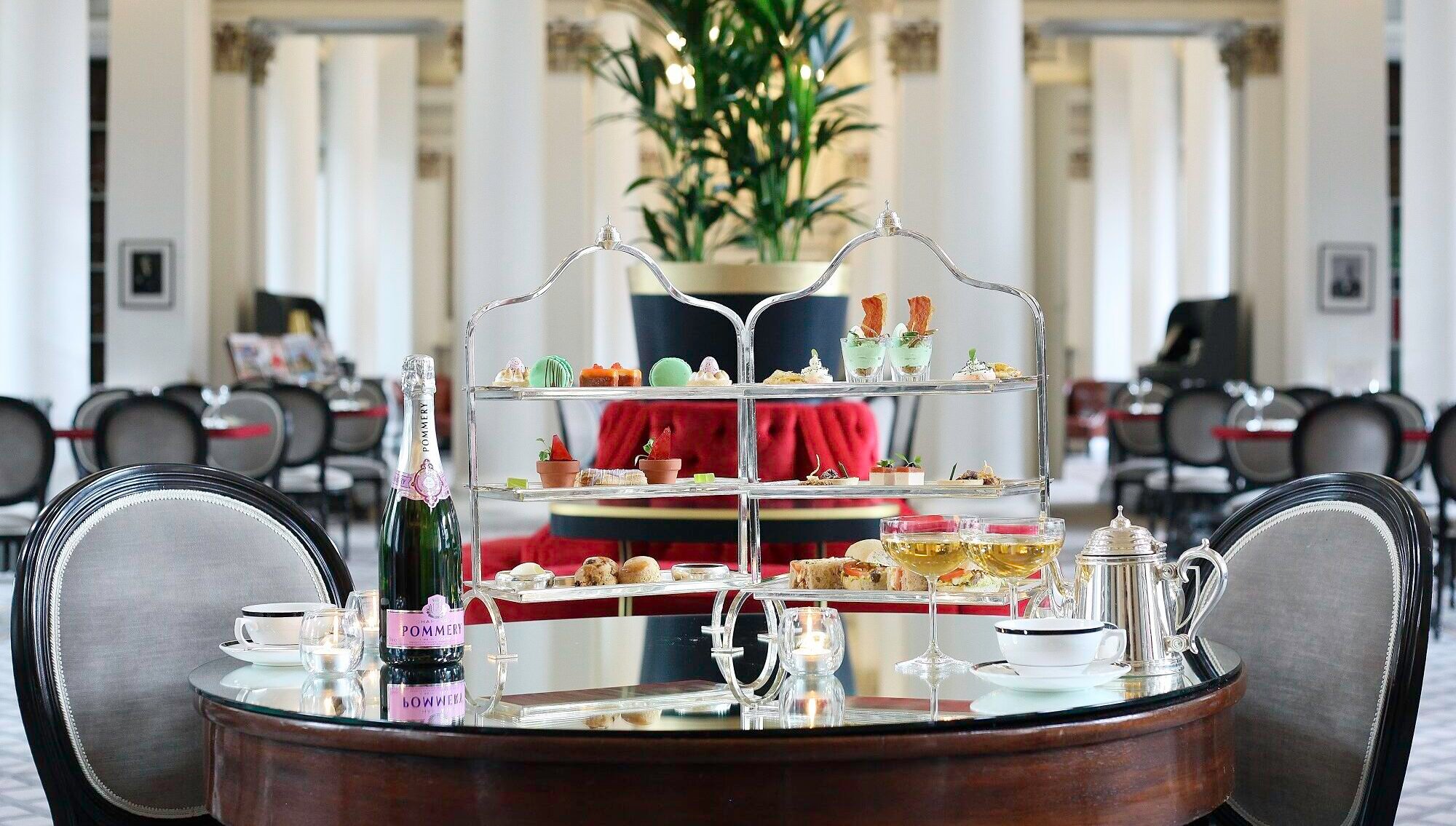
For an afternoon of pure decadence, step inside the beautiful surroundings of the Lower Library of the Signet Library, known as the Colonnades, for the time honoured tradition of afternoon tea.
Whilst enjoying delectable savouries and decadent cakes served on a bespoke silver tea stand, take time to marvel at the library’s magnificence. The Signet Library was completed in 1822 in time for the highly anticipated visit of King George IV to the city, who described the upper library as ‘the finest drawing room in Europe’.
The library is also home to the Society of Writers to Her Majesty’s Signet, an association of Scottish lawyers which dates back to the 15th century as the officers authorised to produce royal manuscripts with the King of Scotland’s seal, i.e. the Signet.
Hotel du Vin & Bistro
A luxury hotel with a highly varied former life
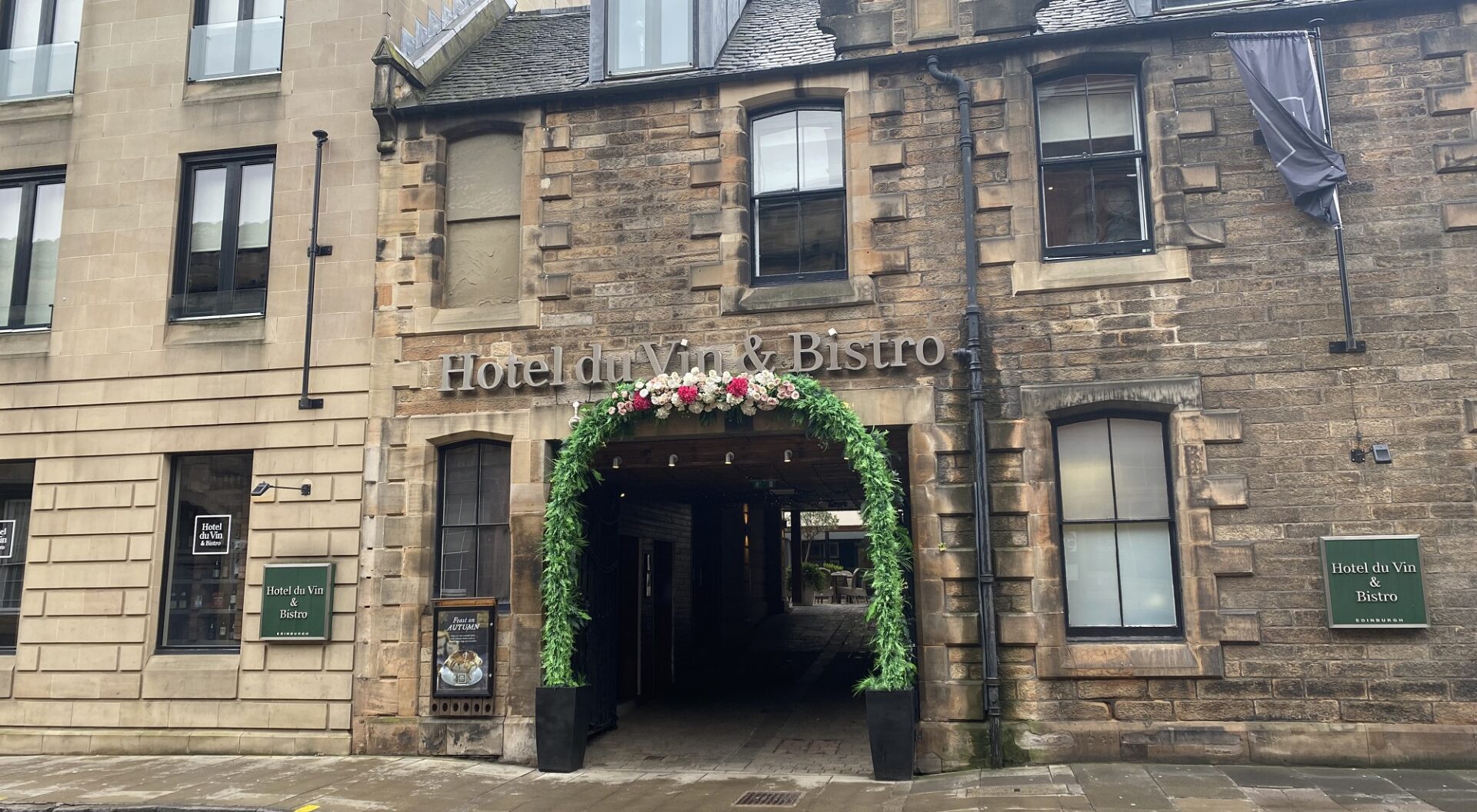
Traditional French cuisine and exquisite wine is at the forefront of Hotel du Vin & Bistro’s menu, so whether you’re staying for the night or enjoying a meal in their bistro, you’re in for a treat.
Today the building is a mix of the old and the new – the original stone building dates to 1743, with a modern extension added in 2007, when the hotel opened.
Located just off the bustling Royal Mile, this luxury hotel has certainly had a varied past life – once a poorhouse, then psychiatric hospital, then a science lab.
Wedgwood the Restaurant
The Edinburgh building with links to Morocco
Wedgwood the Restaurant is well known for its food – innovative dishes created with the finest local produce and ingredients – but not many people know of its Moroccan connections.
Perched high up on this building is a sculpture, which some say represents the Emperor of Morocco. Legend has it that in the 17th century local man, Andrew Gray was accused of assaulting the Provost of Edinburgh but managed to flee the country before his execution. He ended up a slave of the Emperor of Morocco, but was able to rise up through the ranks, gaining favour with the Emperor and amassing a considerable fortune. In time, he returned to Edinburgh where he cured the Provost’s daughter of plague, married her and settled in this Canongate tenement.
It’s thought the figure was erected to honour the Emperor. Although another more plausible explanation may be that it acts as a sign to indicate a tradesman’s place of business. The building was rebuilt in the 1950s, but the turbaned figure remains to this day.
Diners here are treated to a menu that changes with each season, with a focus on the finest local Scottish produce.
Dining in Edinburgh
From fine dining to afternoon tea, satisfy your appetite in Edinburgh.


